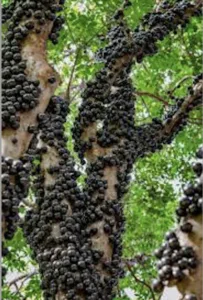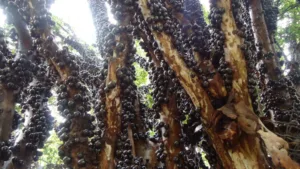The world around us boasts undeniable beauty, marked by the diverse array of plants and flowers, captivating rock formations, vibrant colors, rich smells, and unique sights. For avid travelers, the allure lies in the opportunity to experience nature in ways previously unexplored.

Though I haven’t personally visited Brazil, the discovery of the jabuticabeira plant left me momentarily speechless. The jabuticabeira, also known as the Brazilian Grape Tree, is native to Brazil, and its distinctive appearance may surprise those unfamiliar with it.
What sets this tree apart is the peculiar way it bears fruit. The jabuticaba fruit, with its purplish-black hue, grows directly on the trunk, creating a visual that almost resembles the tree being swarmed by alien insects. Beyond its visual uniqueness, the fruit reportedly offers health benefits, positively impacting respiratory functions and addressing ailments like diarrhea. It is known to open bronchial airways, providing relief for conditions such as asthma.

Furthermore, the jabuticaba fruit is a rich source of antioxidants, reducing the risk of chronic diseases like heart disease, cancer, and diabetes. Native to Brazil, the fruit can be consumed raw or utilized in the creation of jellies, jams, juice, or wine.
In essence, the jabuticaba tree stands as a testament to the extraordinary wonders nature has to offer, inviting us to appreciate the marvels of the natural world, even in places we may have never personally visited.





